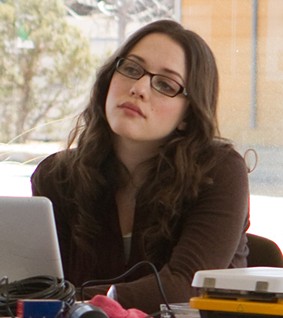I just saw another post lamenting the silly – but unfortunately common – idea that boys can’t be expected to read books about girls, even though girls commonly read books about boys. (In fact, we’re often required to, for school.) I’ve written about this before. So has the excellent Shannon Hale.
It strikes me that part of the issue may be that people have different notions of what “books about girls” or “girl-centric books” are. When we say “it’s a problem that boys aren’t expected to read books about girls,” I think we usually mean “books with female protagonists.” At other times, though, “books about girls” may be used to mean “books about the experience of being a girl” or “books designed to appeal to girls” (which usually means they are about romance and/or close female friendships, possibly with a side of fashion and gossip).
This affects the conversation a lot! After all, this:
. . . may turn off a lot of boys. It turns off a lot of girls, too. Others love it. Some boys love these books, too, or would if they felt they were allowed to. The boys and girls who do want to read these books should be able to enjoy them without judgement, but I wouldn’t argue for pushing people to read them any more than I would argue for pushing them to read sports books or mysteries. It’s nice to at least try it out, to broaden your horizons, but if you don’t like it, that’s fine.
On the other hand, if you subscribe to a broader idea of “books about girls” that encompasses all books with female protagonists, then you get something more like this:
These books range from horror to humor, from fantasy to romance. There are mysteries. There is action. There are comics. The settings are different. The tones are different. The protagonists are very different people, with one thing in common: they are female. If that’s enough for a reader to say, “ew, girl book, I won’t read that” – or for a parent to say “my son won’t read that” or a teacher to say “the boys in my class won’t read that” – then society, we have a problem.
In case anyone’s curious, I’ll list the books here. All are books I’ve read and enjoyed. I went with mostly YA (with one or two MG) both because that’s my own reading preference and because kids and teens who are reading these books so often fall victim to this weird genderization of reading preferences.
Graphic One:
1. Love and Gelato by Jenna Evans Welch
2. Vanished by E.E. Cooper
3. Ali’s Pretty Little Lies by Sara Shepard
4. Along for the Ride by Sarah Dessen
5. The Selection by Kiera Cass
6. Tell Me Again How a Crush Should Feel by Sara Farizan
7. My Life Next Door by Huntley Fitzpatrick
8. Bittersweet by Sarah Ockler
Graphic Two (repeats some books from Graphic One):
1. Love and Gelato by Jenna Evans Welch
2. George by Alex Gino
3. Outrun the Moon by Stacey Lee
4. Smile by Raina Telgemeier
5. Ten by Gretchen McNeil
6. This is Where It Ends by Marieke Nijkamp
7. Sweet by Emmy Laybourne
8. Tell Me Again How a Crush Should Feel by Sara Farizan
9. Endangered by Lamar Giles
10. Out of My Mind by Sharon Draper
11. Chains by Laurie Halse Anderson
12. My Life Next Door by Huntley Fitzpatrick
13. Beauty Queens by Libba Bray
14. Ms. Marvel, vol. 1: No Normal by G. Willow Wilson
15. They All Fall Down by Roxanne St. Claire
16. Along for the Ride by Sarah Dessen
17. In Real Life by Cory Doctorow
18. Soul Enchilada by David Macinnis Gill
19. Cat Girl’s Day Off by Kimberly Pauley
20. The Sweetness at the Bottom of the Pie by Alan Bradley
21. The Hunger Games by Suzanne Collins
22. Adaptation by Malinda Lo
23. Huntress by Malinda Lo (ha, I didn’t even realize I had put in two Malinda Lo books – and right next to each other!)
24. The Selection by Kiera Cass
25. Eon: Dragoneye Reborn by Alison Goodman



